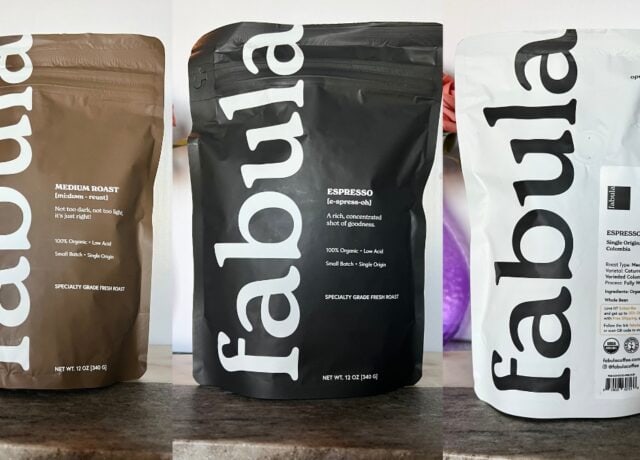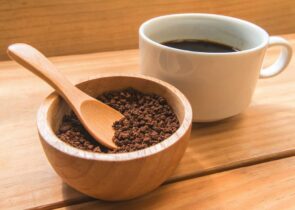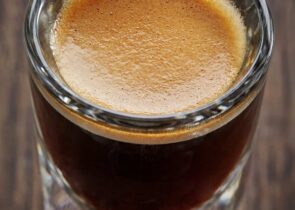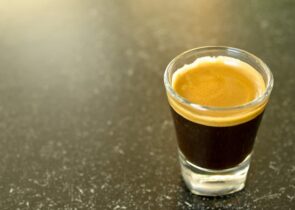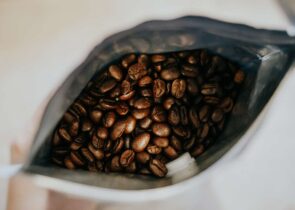Many java lovers swear that when it’s time for you to take your coffee experience to the next level, Kona coffee is the only way to get the job done. It’s silky-smooth with a pleasant aroma, and it’s so delicious that once you’ve tasted it, you’ll never go back to any other bean.
But a word of warning before you rush out to buy a sack of the Hawaiian coffee: it’s got a reputation for being the most expensive coffee in the world. And unfortunately, scammers are well aware of this, so they try to dilute Kona beans with inferior, cheaper beans. Or worse — they use no Kona beans at all!
We’ll get more into all that later, but first, we’re going to share a selection of genuine Kona coffees for you to try. But before we dive into product recommendations, let’s take a closer look at this excellent coffee, why it’s such a big deal, and why it commands such a high price.
At A Glance: Our Top 5 Picks For Best Kona Coffees
What is Kona coffee?
Kona coffee consists of arabica beans cultivated in Hawaiian soil on the slopes of Mauna Loa and Hualalai in the southern and northern districts of the Big Island. And in the same way that only sparkling white wine from France’s Champagne region can be labeled champagne, only coffee beans from the Kona district can be referred to as Kona for marketing purposes.
In short, the location in which they are grown sets Kona coffee apart from other coffee beans.
Coffee beans were first brought to the famous Kona region on the Big Island in 1813 by Don Francisco de Paula y Marin. And soon, the merchant Henry Nicholas Greenwell established the area as an internationally recognized brand.
Kona coffee beans are of such outstanding quality because they’re grown in perfect conditions. While the mornings are sunny, the afternoons bring rain and clouds, and the mild climate usually has very little wind.
Factor in the mineral-rich and fertile volcanic soil that helps these plants thrive, and you’ve got a coffee farmer’s paradise. Also, each Kona coffee plantation produces a very distinct type of bean depending on its individual microclimate — how cool is that?
All About Kona Coffee Production
The growing season for Kona coffee beans extends through the entire year! In February and March, the coffee plants bloom (some call the sight of all those coffee blossoms “Kona snow”), and natural pollination occurs. The coffee trees’ fruits develop from April through August, and the months of September through January are the harvest season.
Mother Nature has no problem making you wait for Kona coffee beans — it takes three years for one of these trees to bear fruit! And even then, it only produces around 25 pounds of coffee cherries. That sounds like a lot, but it really isn’t; it takes eight pounds of coffee cherries to produce roughly a pound of coffee, so a single Kona coffee tree only yields about three pounds of useable java per season.
The producers pick every coffee cherry by hand, which is a massively labor-intensive process. Using a harvesting machine would be easier, but because not every cherry ripens simultaneously, picking them by hand is the only way to guarantee only the ripe ones are plucked from the trees.
Once that happens, a machine strips away the tart cherries’ flesh and pulp, leaving only the coffee beans behind to be cleaned and sun-dried. The post-harvesting processing only takes 24 hours, as a quick turnaround is essential to prevent the beans from spoiling.
Making the Grade
Every batch of Hawaiian Kona coffee is tested and graded by the Hawaii Department of Agriculture (HDA). If you care about buying the best of the best, be sure to look for the HDA grade on the bags of coffee beans you’re purchasing.
The coffee grade is based on various criteria, including shape, size, rarity, and moisture content. Imperfections are also considered. Hawaiian roasters (all coffee roasters, really) prefer beans with the fewest defects; if they have chips, hollows, or other deformities, the beans won’t roast uniformly and won’t produce the complex flavors you’d expect from good coffee.
There are eight grade bands: Extra Fancy, Fancy, 1, Select, Prime, 3, Natural Prime, and Mixed Natural Prime. As you probably guessed, the Extra Fancy beans are the cream of the Kona coffee crop, and they’re the most expensive.
Coffee experts consider any Kona joe graded 1 through 5 to be among the highest quality of beans, and there’s not much difference in their flavor. But we think you should avoid number 3 coffee because this grade contains the highest permitted rate of defective beans: a whopping 35 percent.
It is also important to note that, when buying Kona coffee, you make sure to avoid the ones labeled as “Kona blend.” These only have to contain 10% Kona coffee, and the other 90% is usually filled with low-quality foreign beans, which ruin the experience. If you want to experience the authentic taste of Kona in your cup of coffee, make sure to buy 100% pure Kona instead.
Quick Summary: The Best Kona Coffees
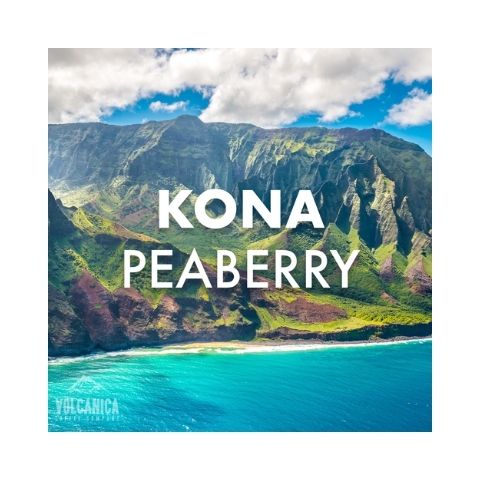 | Our Top Pick Volcanica Kona Peaberry Coffee |
| Check Price → |
 | Our Top Pick Maud's Kona Gourmet Coffee |
| Check on Amazon → |
 | HUALALAI ESTATE KONA COFFEE |
| Check on Amazon → |
 | Kona Gold Coffee |
| Check on Amazon → |
 | IMAGINE KONA COFFEE |
| Check on Amazon → |
 | MOUNTAIN THUNDER PRIVATE RESERVE KONA COFFEE |
| Check on Amazon → |
 | ROYAL KONA ESTATE KONA COFFEE |
| Check on Amazon → |
What does Kona coffee taste like?
Six characteristics create the unique Kona coffee flavors, and each of them makes this joe unparalleled in the coffee world.
The first thing you’ll notice when brewing a cup of Kona is the sweet, amazing aroma the brew exudes. Then, you’ll take a sip; the flavor profile is sweet, rich, and mellow, boasting a nutty and honey-like sweet taste that’s reminiscent of caramel, butter, cocoa, or fruit.
As we briefly mentioned earlier, the flavor profile varies from farm to farm. Some Kona coffee trees produce beans with a more berry-like scent, while others may grow a product that smells more like vanilla. Despite the distinctive qualities of each Kona farm’s batch of beans, all coffee grown in the Kona coffee belt creates a rich, mellow, and flavorful brew.
The coffee from the farms at 1200 feet above sea level is usually mellow, delicate, and subtle. The coffee grown at higher altitude farms at 1600 feet or above produces beans with remarkable floral notes and rich sugars.
Plus, the brew naturally has a very low acid content, so it’s gentle on the digestive system and smooth on the palate. You’ll also enjoy the sweet but bitter aftertaste and the flavors of citrus and nuts dancing on your taste buds.
Kona coffee not only has a wonderful flavor, but it has a pretty unique physical effect, too. It won’t give you the same jitters a cup of regular coffee would. In fact, it has the opposite effect, making you feel calm and rejuvenated.
Does reading about these delicious flavor notes have your taste buds tingling and your mouth watering? Then, it sounds like the perfect time for us to introduce you to all of our favorite genuine Kona coffee brands!
Roasty Rankings: Our Top Picks for the Best Kona Coffee
Volcanica Kona Peaberry Coffee – Gran Reserve

Volcanica Kona Peaberry Coffee
The Kona Peaberry Coffee is known as the champagne of Kona coffee. Rich with a deep volcanic flavor, Kona Coffee can be described as smooth, nutty, and luscious with an intense aroma and low acidity. The Gran Reserve Kona Peaberry Coffee beans are highly prized for their smooth full flavors, deliciously rich, medium-body, complex taste, and heady aroma.
We’re big fans of Volcanica Coffee Company as a whole, but this smooth coffee is top-shelf quality. They even describe it as the “champagne of coffee.” These fancy beans come from mineral-rich volcanic soil on the slopes of Mauna Loa with its rich soil, sunny mornings, and abundant rainfall.
This isn’t just Kona coffee. It’s peaberry Kona, which comprises only about five percent of the Kona coffee variety. This stuff is full of smooth flavor.
The good folks at Volcanica sent a free sample of this joe for the fine people at Roasty to try, and it was truly exceptional. We’re not necessarily coffee snobs (maybe we are), but we can definitely taste the difference between this joe and some batch of cheap grocery store beans misleadingly marketed as Kona coffee.
Maud’s Gourmet Coffee Kona Coast Blend
Are you a coffee connoisseur who relies on a product from Keurig’s roster to get your morning brew? If you said yes, we’ve got good news for you: you can enjoy the rich flavor of Kona coffee, too. Just pick up a box of the stuff from Maud’s Coffee!
Each of Maud’s Coffee’s Kona Coast K-Cups creates a brew with a smooth body, low acidity, and delicious chocolatey undertones. Though these beans hail from the Kona coffee region, they’re roasted to medium-colored goodness in the brand’s solar energy-powered facility in San Diego. Plus, the pods are 100 percent recyclable.
Hualalai Estate Kona Coffee
Hualalai Estate ensures that only high-quality coffee beans make their way into your bag of Kona coffee. The company uses only uniform beans, which means you’re more likely to end up with a consistent roast and, in turn, a better-tasting cup of coffee.
Hualalai Estate, which began as a passion project in 1996, sources coffee from multiple farms. It’s a great deal for all parties involved, as this means farmers can sell their joe without all the effort of marketing, and Hualalai gets to sell only the best Hawaiian coffees possible.
Kona Gold Trading Co. Medium Dark Roast
We think all serious coffee aficionados should give Kona coffee a try, and buying a bag of Hawaiian coffee beans from Kona Gold Trading Co. is a great way to see what all the hype’s about.
The company’s delicious coffee is grown in volcanic soil under the shade of ohia and macadamia trees before they’re hand-picked, wet-processed, sun-dried, and air roasted. What does all that mean, you ask? Well, unless you’re looking into getting into the bean business yourself, you probably don’t care about all the details. All you really need to know is that these medium-dark coffee beans will give you a clean tasting cup.
Imagine Kona Coffee Beans
The thing that makes these 100 percent Kona beans great is the character of their flavor. Plus, these coffee plants are shade-grown in rich volcanic soil, a trait of most genuine Kona beans, which produces a naturally low-acid coffee. These gourmet coffee beans have an Extra Fancy grade, making them some of the best you can buy.
The sweet, robust flavor of this medium-dark roast premium coffee is rich and intense with no trace of bitterness, and the air-roasted beans are perfect for use in drip coffee makers, French presses, and cold brew coffee brewing methods.
Mountain Thunder Private Reserve Kona Coffee
The next offering on our list of Kona blends comes from Mountain Thunder and grows at a high elevation in the heart of the world-famous Kona coffee belt on Hawaii’s Big Island. Specifically, the coffee farming and production of these beans happen on the slopes of the active Mount Hualalai volcano. This area boasts perfect growing conditions with volcanic soil, mild climate, light winds, ample summer rain, high elevation, and sunshine.
Once the beans are harvested, they’re cleaned, graded, and processed through a Satake Optical Color Sorter, which removes any black, orange, or yellow beans — those tend to leave an undesirable and bitter taste in your mouth. Then, they’re roasted to produce a French or Vienna roast with a nutty chocolate flavor and cinnamon overtones.
Royal Kona Estate Kona Coffee
Since Royal Kona Coffee burst onto the scene in 1969, the Hawaii Coffee Company-owned brand has delivered mug after mug of Kona-grown goodness. Take just one sip of the smooth, full-bodied joe, and you’ll understand why Royal Kona has been such a popular choice for years.
Royal Kona’s 100 percent Kona coffee is a product of the world’s largest Kona roaster, and it’s Hawaii’s leading supplier of coffee to the state’s hotels, restaurants, and retailers. And it’s no wonder so many businesses want to get their hands on the stuff — each bean is plucked from the best of the Kona coffee bean harvests and roasted to medium perfection.
Beware of Rip-Off Hawaiian Kona
Now that we’ve recommended the best genuine Kona coffees we could find, you, like most home baristas, are probably itching to buy a bag. And you’ll probably want to veer off the path we’ve paved for you to see what else is on the market to be sure you’re not missing out on another great Kona coffee product.
Be careful in your search, though. As we stated earlier, it’s pretty common practice to sell coffee labeled as “Kona” when it’s just 10 percent Kona and 90 percent foreign-origin beans. It’s not illegal, but you might as well use your money to buy something else instead of settling for subpar-tasting and often imperfect beans.
Make sure you’re buying beans that are certified as 100 percent Kona coffee. There are a few ways to make sure you’ve got the real thing:
- Check the coffee packaging and label. If the brand makes no mention of Hawaii, walk away; there are plenty of other more amazing coffees for you to try instead.
- Find out where the coffee beans are sourced. The quality of coffee beans is important, but the origin of the joe is ultimately what makes it Kona. It has to come from the Kona district on Hawaii’s Big Island; if it comes from anywhere else, it just ain’t Kona.
Another red flag is the term “Hawaiian flavors” instead of mentioning the Kona coffee-growing region. Some brands that use coffee from other parts of the state attempt to boost sales by marketing their product as having desirable Hawaiian flavors and tastes, but that’s not genuine Kona! Some areas of Hawaii are either too wet or too hot and are not suitable for coffee-growing. Steer clear of those beans.
Where should you buy Kona coffee?
Most genuine Kona coffee producers have their own websites, so if you decide not to click any of the links we’ve provided above, you can start your Kona coffee journey by ordering directly from them. Avoid buying subpar, knock-off Kona by consulting the list of producers on the Kona Coffee Farmers official website.
Plus, buying directly from KCFA member farms means you’re getting the freshest coffee possible. You’ll be supporting small farmers, too!
A Kona Coffee Speed Round
You’ve still got questions, and we’ve got answers. Let’s dive in!
Does Starbucks sell Kona coffee?
Are you a coffee lover who only trusts Starbucks Coffee to meet all your brewing needs? We’re not just talking about people who use their cell phone GPS to look up a Starbucks location any time they need a caffeine fix on the go. We’re talking about people who are so in love with the Seattle-born coffee giant that they only purchase bags of coffee beans from Starbucks for all their home-brewing endeavors.
Did we just describe you? Do you want to experience the clean taste of Hawaiian soil-grown Kona coffee without having to give up your brand loyalty? Well, the good news is that your favorite coffee company released 100 percent Kona coffee back in 2012. The bad news is that it was a limited-release coffee, and while there has since been a second release of the stuff in 2015, it sold out fast. So, if Starbucks brings back the exclusive joe, it might be difficult for you to get your hands on a bag.
What’s the best roast level for Kona coffee?
Once the green coffee beans have been picked and processed, they’re ready to be roasted. But what roast level best captures the fruity flavors Kona lovers crave?
The ideal roast level for a cup of this joe ultimately depends on the drinker’s preferences. We recommend a light or medium roast, as a darker roast may mask these gourmet beans’ original flavor.
Is Kona coffee high in caffeine?
Did you know that the amount of caffeine present in a cup of black coffee is partially determined by the type of coffee bean used to brew it?
When comparing beans from other sources, you’ll find that Kona coffee has a pretty high percentage of caffeine. For example, the commonly enjoyed Ethiopian Harrar bean only has a 1.13 percent caffeine content, while our friend Kona Extra Prime has a 1.32 percent caffeine content.
What makes Kona so expensive?
One thing you’ve probably noted about our recommended Kona coffees is that they are a heck of a lot pricier than your standard caffeine fare. That’s because, unlike many cheaper coffees grown on huge plantations, producing Kona on such a small scale is a labor-intensive, time-consuming process. So, a higher price point is necessary to cover labor costs.
What’s the best brewing method for Kona coffee?
Because Kona coffee is packed with such distinct and unique flavors, we recommend using one of our favorite hand-brew methods (also called manual brewing methods). If you’ve bought a bag of these beans grown in a near-perfect climate, pull out your Chemex or French press brewer so you don’t miss even one of the Kona brew’s fruity notes.
Wrapping it up
If you’re a true coffee addict (you know, like all of us here at Roasty), you need to try Kona coffee at least once before you die. Period. But make sure you’re getting the good stuff; the low-quality beans aren’t going to cut it.
Although genuine Kona is pricier than other coffees, we think the cup of exceptional coffee you’ll brew is worth the expense. Sipping the smooth, aromatic brew will make you feel as if you’re on a Hawaiian vacation, so take your time and savor every delicious drop.
Happy Caffeinating!








